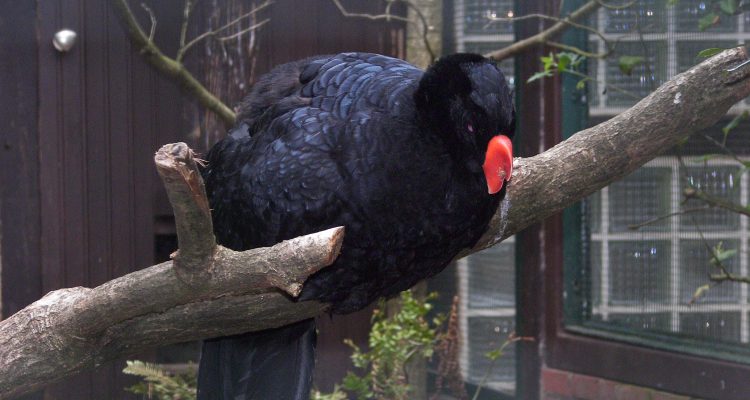
Mitu
Mitu mitu mitu NatureServe Explorer Species Reports — NatureServe Explorer is a source for authoritative conservation information on more than 50,000 plants, animals and ecological communtities of the U.S and Canada. NatureServe Explorer provides in-depth information on rare and endangered species, but includes common plants and animals too. NatureServe Explorer is a product of NatureServe in collaboration with the Natural Heritage Network.
FWS Digital Media Library — The U.S. Fish and Wildlife Service’s National Digital Library is a searchable collection of selected images, historical artifacts, audio clips, publications, and video.
The Alagoas curassow (Mitu mitu) is a glossy-black, pheasant-like bird. It was formerly found in forests in Northeastern Brazil in what is now the states of Pernambuco and Alagoas, which is the origin of its common name (Harry 2006). It is now extinct in the wild; there are about 130 individuals in captivity. German naturalist Georg Marcgrave first identified the Alagoas curassow in 1648 in its native range. Subsequently, the origin and legitimacy of the bird began to be questioned due to the lack of specimens. An adult female curassow was rediscovered in 1951, in the coastal forests of Alagoas. This was then accepted as a separate species (Silveira). At that time fewer than 60 birds were left in the wild, in the forests around São Miguel dos Campos. Several authors in the 1970s brought to light the growing destruction of its habitat and the rarity of the species. Even with these concerns, the last large forest remnants which contained native Mitu mitu were demolished for sugarcane agriculture.
| Status | Date Listed | Lead Region | Where Listed |
|---|---|---|---|
| Endangered | 06/14/1976 | Foreign (Headquarters) | Wherever found |
| 06/14/1976 | 41 FR 24062 24067 | Endangered Status for 159 Taxa of Animals; 41 FR 24062 24067 |
| 09/26/1975 | 40 FR 44392 44333 | CITES: Proposed Endangered Status for 216 Species on Convention Appendix I; 40 FR 44392 44333 |












